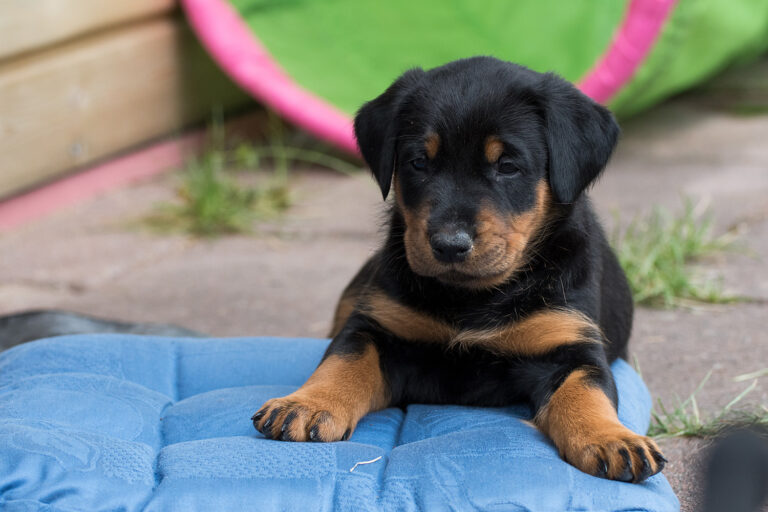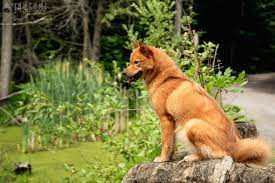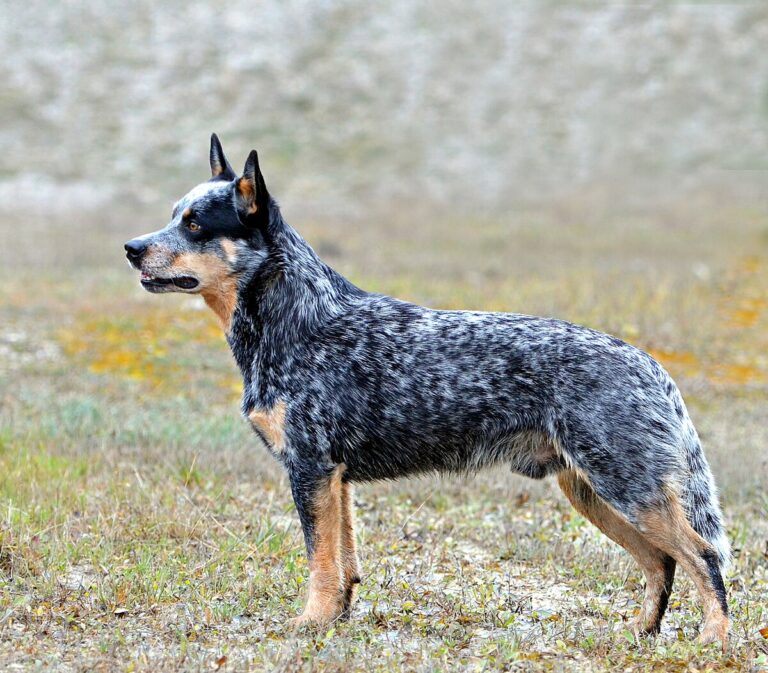The Hungarian Mudi Dog: A Comprehensive Guide to This Rare Herding Breed
The Hungarian Mudi, often simply called Mudi or Mudis in plural form, remains one of Europe’s best-kept canine secrets. This versatile herding dog combines intelligence, agility, and devotion in a medium-sized package that’s increasingly catching the attention of dog enthusiasts worldwide.
As more people discover this remarkable breed, let’s explore everything you need to know about these distinctive dogs, from their rich heritage to their modern-day care requirements.

Origins and Historical Significance
The Mudi’s story begins in Hungary, where these agile herders evolved naturally from crosses between various Hungarian sheepdogs during the 18th and 19th centuries. Unlike many modern breeds that were deliberately created, the Mudi developed through natural selection as working farm dogs, primarily in the country’s lowland regions. Dr. Dezső Fényes first documented the breed in 1936, recognizing them as distinct from their cousins, the Pumi and Puli.
What makes the Mudi particularly special is their near brush with extinction during World War II. The breed survived largely thanks to dedicated Hungarian breeders who recognized their exceptional working abilities and unique characteristics. Today, while still rare globally, the Mudi has earned recognition from major kennel clubs and maintains a steady following among herding enthusiasts.
Physical Characteristics and Appearance
The Mudi’s appearance reflects their working heritage, combining elegance with athleticism. Their most striking feature is often their expressive face, topped by distinctively erect ears that give them an alert, attentive expression. Their coat, which can appear in several colors, is typically wavy to slightly curly, medium-length, and remarkably weather-resistant.

Speaking of colors, Mudis display an impressive variety in their coat colors. The recognized breed colors include:
- Black
- Brown
- White
- Gray (often with merle patterns)
- Fawn
- Black and tan
The merle pattern, particularly common in gray Mudis, creates a distinctive marbled effect that many enthusiasts find especially attractive. However, responsible breeders carefully manage merle breeding to avoid potential health issues associated with double-merle genetics.
Size and Build
Mudis are medium-sized dogs with a well-proportioned build that emphasizes agility and strength without bulk. Males typically stand 18-19 inches at the shoulder, while females are slightly smaller at 17-18 inches. Weight-wise, most adults range from 18-29 pounds, with females again being on the lighter end of the spectrum.
This size makes them particularly versatile, being substantial enough for serious work but compact enough to adapt to various living situations. Their build reflects their herding heritage, with a deep chest, strong legs, and an athletic frame that allows them to work tirelessly when needed.
Temperament and Personality
The Mudi’s temperament is perhaps their most endearing quality. These dogs combine intelligence with a strong work ethic and deep loyalty to their families. They’re known for being highly trainable, eager to please, and remarkably adaptable. However, prospective owners should understand that this intelligence comes with a need for mental stimulation and purpose.
Affection-wise, Mudis form strong bonds with their families while maintaining a slightly reserved attitude toward strangers – a trait that makes them excellent watchdogs without being aggressive. They typically show gentle attention to their family members but may choose one person as their primary companion.
Early socialization is crucial for Mudis, as it helps them develop into well-rounded adults. When properly socialized, they generally get along well with children and can adapt to living with other pets, though their herding instincts may lead them to try to “gather” running children or small animals.
Training and Intelligence
One of the Mudi’s standout qualities is their high trainability. These dogs possess keen intelligence combined with an eager-to-please attitude that makes them highly responsive to training. They excel in various dog sports, including agility, obedience, and herding trials. Their problem-solving abilities and quick learning capacity make them particularly rewarding to train.
However, this intelligence means they need consistent mental stimulation to prevent boredom. A bored Mudi may develop destructive behaviors or excessive barking. Training should focus on positive reinforcement methods, as these dogs can be sensitive to harsh corrections.

Exercise and Activity Needs
Mudis are high-energy dogs that require significant daily exercise. They thrive with at least 60-90 minutes of active exercise daily, preferably split between physical activity and mental stimulation. Their exercise needs make them excellent partners for active individuals or families who enjoy outdoor activities.
While they can adapt to apartment living if their exercise needs are met, they typically do better with access to a securely fenced yard where they can run and play. Their herding background means they particularly enjoy activities that challenge both mind and body, such as agility training, frisbee, or structured herding activities.
Living with a Mudi
When it comes to apartment living, Mudis can adapt if their exercise and mental stimulation needs are met, but they’re not naturally suited to confined spaces. Their energy levels and herding instincts make them more appropriate for homes with yards or access to open spaces.
Regarding barking, Mudis are moderately vocal dogs. They will typically alert their owners to unusual activities or visitors but aren’t known for excessive barking when properly trained and exercised. However, their watchdog tendencies mean they may be more vocal than some other breeds.
When it comes to being left alone, Mudis can handle reasonable periods of solitude if properly trained and exercised. However, they’re social animals that prefer company and may become anxious or destructive if left alone for extended periods regularly.
Grooming and Shedding
For those wondering “do Mudi dogs shed?” – yes, they do, but moderately. Their coat is relatively easy to maintain, requiring regular brushing a few times a week to prevent matting and remove loose hair. They experience seasonal shedding, typically heavier in spring and fall.
Are Mudi dogs hypoallergenic? While no dog is truly hypoallergenic, Mudis produce relatively less dander compared to many other breeds. However, individuals with dog allergies should still spend time with the breed before committing to ownership.
Health and Longevity
The Hungarian Mudi typically enjoys robust health with a life expectancy of 12-14 years, thanks in large part to their natural development as a breed rather than intensive selective breeding. However, like all dog breeds, they can be prone to certain health conditions that prospective and current owners should be aware of and monitor throughout their pet’s life.
Hip dysplasia, while less common in Mudis than in many other herding breeds, remains a concern that responsible breeders screen for. This hereditary condition occurs when the hip joint doesn’t fit together properly, potentially leading to arthritis and mobility issues as the dog ages. Signs of hip dysplasia can include difficulty rising from a lying position, reluctance to jump or climb stairs, and a noticeable “bunny hop” gait when running. Regular veterinary screening beginning in puppyhood can help identify early signs of this condition.
Eye health deserves particular attention in Mudis. Progressive Retinal Atrophy (PRA), a degenerative condition affecting the retina, can occur in some lines. This condition typically begins with night blindness and can eventually lead to complete vision loss. Regular eye examinations by a veterinary ophthalmologist can help detect early signs of PRA and other eye conditions such as cataracts. While there’s no cure for PRA, early detection can help owners prepare for and manage their dog’s changing needs.
Epilepsy has been documented in some Mudi lines, manifesting as recurring seizures that may begin between six months and three years of age. While epilepsy can be concerning for owners, many dogs with this condition live normal, healthy lives with proper medical management. Working closely with a veterinarian to establish the right medication protocol is essential for affected dogs.
Elbow dysplasia, though less prevalent than hip dysplasia, can also affect the breed. This developmental abnormality of the elbow joint can cause lameness and discomfort, particularly during exercise or cold weather. Like hip dysplasia, early detection through regular veterinary screening is crucial for managing this condition effectively.
Preventative care plays a vital role in maintaining a Mudi’s health and can help prevent or minimize many health issues.
A comprehensive wellness plan should begin in puppyhood and continue throughout the dog’s life. Regular veterinary check-ups, typically scheduled every six months for adult dogs, allow for early detection of potential health issues and ensure vaccinations remain current.
Dental health requires particular attention in Mudis, as with all dog breeds. Regular brushing, ideally daily but at least several times per week, helps prevent periodontal disease, which can impact overall health. Professional dental cleanings may be recommended by your veterinarian based on your dog’s individual needs.
Maintaining an appropriate weight through proper nutrition and exercise is crucial for preventing joint stress and other health issues. Mudis are active dogs who typically maintain a healthy weight when provided with adequate exercise, but owners should regularly monitor their dog’s body condition and adjust food portions accordingly. Premium quality dog food appropriate for the dog’s age and activity level provides the necessary nutrients for optimal health.
Parasite prevention represents another crucial aspect of health care for Mudis. Regular treatment for both internal parasites (through routine deworming) and external parasites (through flea and tick prevention) helps protect these dogs from preventable health issues. Your veterinarian can recommend an appropriate parasite prevention protocol based on your geographic location and your dog’s lifestyle.
Weather protection deserves consideration in Mudi health care, particularly during extreme conditions. While their coat provides good protection against both cold and heat, Mudis should not be left outside in extreme temperatures. During hot weather, ensure access to shade and fresh water, and consider limiting exercise to cooler hours of the day. In cold weather, shorter-coated or elderly Mudis may benefit from a dog coat during outdoor activities.
Mental health and stress management also play important roles in overall wellbeing. Mudis are intelligent, active dogs who need regular mental stimulation to prevent anxiety and stress-related behaviors. Regular exercise, training sessions, and interactive play help maintain not just physical health but also emotional and mental wellness.
Cost and Availability
For those wondering “how much is a Mudi,” prices typically range from $1,800 to $3,500 in the USA. This relatively high price reflects their rarity and the careful breeding required to maintain healthy bloodlines. The cost may be higher for puppies from championship lines or with extensive health testing.
Finding reputable Mudi breeders requires research and patience. When looking for good Mudi breeders, potential owners should:
- Check for membership in recognized breeding organizations
- Verify health testing of parent dogs
- Ask about socialization practices
- Request references from previous puppy buyers
- Be prepared to join a waiting list
Breed Recognition and Standards
The Mudi gained full recognition from the American Kennel Club (AKC) in 2022, marking a significant milestone for the breed in the United States. They’re classified in the Herding Group, acknowledging their working heritage. The breed is also recognized by the Fédération Cynologique Internationale (FCI) and various other international kennel clubs.
First-Time Dog Owner Suitability
Are Mudis good for first-time dog owners? While intelligent and trainable, they may present challenges for novice dog owners due to their high energy levels and need for consistent training. However, dedicated first-time owners who are willing to invest time in training and exercise, and who possibly work with professional trainers, can succeed with a Mudi.
Conclusion
The Hungarian Mudi represents a fascinating combination of intelligence, versatility, and devotion. While they may require more exercise and mental stimulation than some breeds, they reward their owners with unwavering loyalty and remarkable capabilities. As recognition of this breed grows, their popularity is likely to increase, though their rarity helps maintain their unique characteristics and working abilities.
For the right owner – one who can provide adequate exercise, training, and companionship – a Mudi can be an extraordinary companion, equally capable of excelling in dog sports, working as a farm dog, or simply being a devoted family pet. Their combination of intelligence, adaptability, and moderate size makes them a compelling choice for active individuals or families willing to invest in their care and training.





